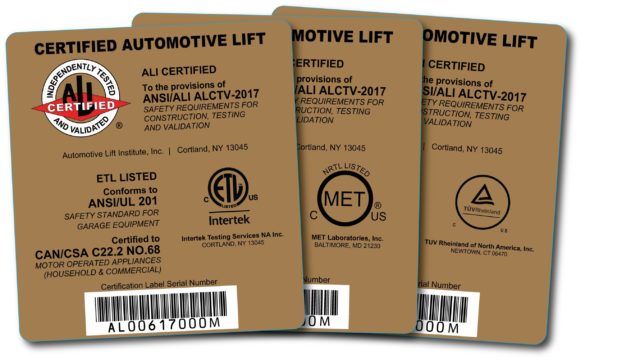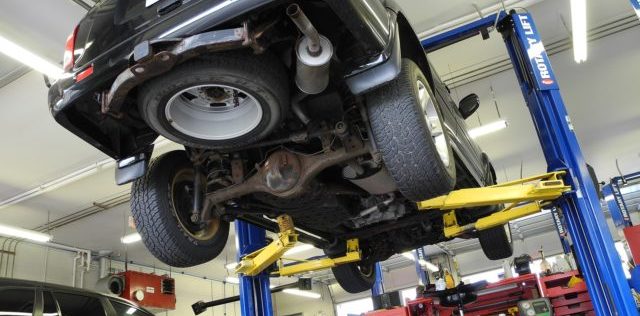With the introduction of tougher certification requirements, automotive lifts are safer than ever, and sporting a new gold Automotive Lift Institute label.
ANSI/ALI ALCTV is the safety standard covering vehicle lift design, construction, testing and validation throughout Canada and the U.S.
The latest edition of the certification standard, ANSI/ALI ALCTV: 2017, took effect July 24, 2018, replacing its predecessor, ANSI/ALI ALCTV: 2011.

Earning one of these Automotive Lift Institute (ALI) gold certification labels is a little more challenging under the new edition of ANSI/ALI ALCTV now in effect, and that’s good news for lift operator safety.
While the major design and construction requirements of the standard remain intact, significant updates were made to strengthen the testing that must be performed by a Nationally Recognized Testing Laboratory to confirm that a lift meets these requirements.
Changes include expanding the testing requirements for load-holding devices (also known as “latches” or “locks”) and increasing the number of test cycles.
International Building Code and a number of state, provincial and local regulations mandate that only lifts certified to meet ANSI/ALI ALCTV can be installed. These certified lifts wear the ALI Gold Label and are listed in ALI’s online directory of certified lifts found here: www.autolift.org/ali-directory-of-certified-lifts/. All lifts that are certified to meet the current edition of the standard are listed.
“ALI and our members take our lift safety mission very seriously,” said Dale Soos, ALI senior project engineer. “Since introducing the ALI Lift Certification Program in 1993, the committee responsible for the standard has continuously improved it to promote technician safety on the job and wherever a vehicle lift is used.”
In addition to the testing requirement changes, ANSI/ALI ALCTV: 2017 explains the difference between lift accessories and lift attachments and clarifies which aspects of the standard apply to each. The current edition also includes a new section of requirements for wireless controls.
Facilities with lifts that were certified to the prior edition of the standard do not need to take any action as a result of the update. However, when shopping for a new lift, do not assume that a previously certified model is certified to the current edition of the standard. Any lift model that was certified to the 2011 edition of the standard had to be tested to verify that it met all the new requirements in order to be recertified.
To confirm that a lift is certified to the current standard, visit www.autolift.org/ali-directory-of-certified-lifts/ or look for the new ALI Gold Label with ANSI/ALI ALCTV: 2017 at the top.
Copies of the ANSI/ALI ALCTV:2017 “Safety Requirements for Construction, Testing, and Validation” standard can be ordered from ALI at www.autolift.org/ali-store/.
For more information about ALI and its lift safety initiatives, visit www.autolift.org or call (607) 756-7775.


0 Comments